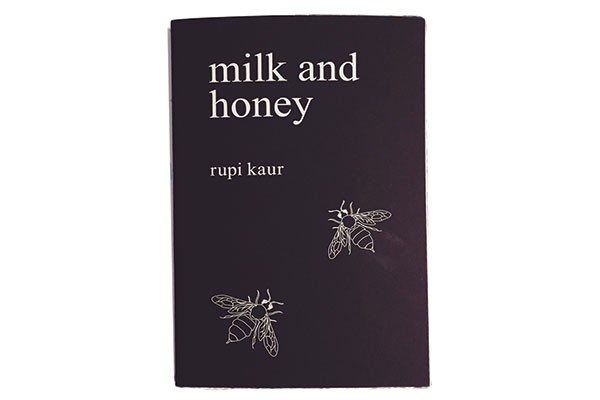As nervous as I am to admit it, I disliked milk and honey.
The majority of people to whom I’ve mentioned Rupi Kaur’s first and only book don’t hesitate to immediately vomit their adoration for the poetry and the woman behind it, leaving me feeling awkward and unable to express my true feelings.
I’m sorry people. I’m not coo-coo for it.
The work milk and honey came to my attention during the summer I worked in a bookshop as the most requested, most ordered, most talked about book in store. Curiosity got the best of me and I ordered a copy for myself, with naturally high expectations. Split into four chapters, with everything in lower case, there is “the hurting”, “the loving”, “the breaking” and “the healing”. Basically it is Lemonade, without the layers of brainwork. Less onion, more cake. It takes a day or two to read and, to be honest, the book left me feeling a bit empty, a bit disappointed and, dare I say it… cheated?
There are some absolute gems in there, for example, “he guts her with his fingers like he’s scraping the inside of a cantaloupe clean”. That’s great, squirmy imagery. But then: “how do you turn a forest fire like me so soft I turn into running water”… now I’m squirming for the wrong reasons.
Kaur touches on important topics of sexuality, self-love and abuse, all of which should be discussed openly in literature and life. While elegantly done, there is no daring to Kaur’s seemingly unedited work.
Where is the grit Rupi? The mess and stink of being not only a woman, but a human? She aims for gore but ends up with lace; there is a delicacy in this collection that I simply cannot relate to and it irks me because I’ve seen it before and I’ll see it again.
I was sad to find that this book bothered me. On almost every page “I could write that” crossed my mind, followed by the question “wait, did I write that once?” It is not exactly groundbreaking stuff, though the illustrations are DIVINE and I would happily get several tattooed on my upper thigh. But isn’t it supposed to be about the craft of the written word? The magic and art of poetry bare in itself, the frills added only after the true work is done? This seems to be a book you buy merely to own because it is aesthetically orgasmic, but in terms of revelation, I found only the all too familiar and the one-dimensional.
We read poetry in order to find textual evidence that our feelings might be universal, to relearn the meaning of words as they lie in new combinations. This gave me nothing new.
Kaur does not deliver. It is all repetitious, ideal for Instagram (which is how Kaur kicked off), but not for a book.
This being said, I appreciated her reasoning for writing everything in lower case; to honour her mother tongue Punjabi which uses gurmukhi script, a form that treats all letters the same with no capitals. But this does not save the fact that the whole thing reads like a Lana Del Rey album: too simple, almost lazy, but with good vibes. And while I shamelessly like all of those things, the tragedy is that I am not a high school girl discovering poetry for the first time. That phase is over. I can only hope readers of Kaur will discover Warsan Shire or Anne Carson as a result.
While I may dislike her, I’ll still keep her on my shelf. I might visit her again and change my mind, but, for now, I’m sorry Rupi. You just aren’t my cup of tea.



